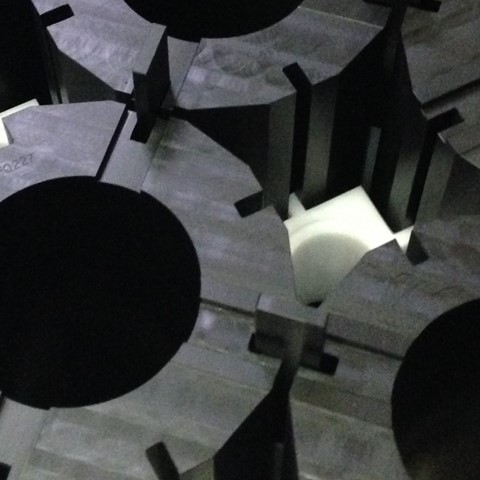We make use of cookies. When you click on agreed you are giving us your permission to do so. Please read our cookie statement for more information.
Insights from LTO safety cases, interview with Mr. Reed, EDF Energy
Insights from LTO safety cases, interview with Mr. Reed, EDF Energy
30 April 2021
Background
I joined the UK electricity company when it was a single government owned company generating electricity from coal, oil, gas hydro and nuclear. I joined at the Berkley Nuclear Research Laboratory in the west of England looking at a combination of fundamental science and application to the new generation of reactors at that time some 40 years ago.
My first role was in the fundamental science of dust particles. The science of how they bounce and resuspend (we published a paper looking at dust storms on Mars!). But then I got into graphite. From the 40s onwards when first used in the initial reactors, graphite has been a very interesting material.
Today, only the UK and Russian RBMK reactors are operating that have significant volume of graphite. But looking forward some of the next generation of reactors designs will have graphite in them. Do we bridge the current experience into a next generation?

Dr. Jim Reed
Chief Graphite Engineer at EDF Energy
The gap between current power plants and new built
We’re looking for a balance between an appropriate investment of time and resources to understand the ageing well enough so we can continue operation of our reactors. Nuclear safety is the fundamental requirement but when looking at lifetime extension the increasing risk needs to be understood and, if there is uncertainty in the effort or the investment, to reduce this uncertainty. So we need to invest in our current plants and get the exact balance where we’ve reached the lifetime and hopefully that helps us bridge the gap. The UK regulation colors what we do. In our case in the UK the operator is responsible for nuclear safety and is required to demonstrate that to the Regulators. So it falls to us as the operator to use the science and the engineering knowledge to set down in a safety case why it is safe to operate.
For most the components in the reactor there are safety cases that extend well beyond the lifetime of the plant. Their ageing and degradation is sufficiently slow or well understood there are no challenges. For the graphite core, the ageing and degradation requires us to keep developing our safety case to show there are healthy safety margins.
My role works across a range of technical disciplines in an oversight role and look at the balance of work. We have a team of about 300 scientists and engineers who are gathering the new evidence we need; this covers work looking at irradiation damage at the atomic level up to looking at the seismic response of an array of graphite components to ensure the channels remain straight enough that control rods will fall into the core.
The current fleet of graphite reactors are reaching the end of their generation in the next 5-10 years. With the graphite core as the life limiting factor of the AGR’s. (The first two reactors Hinkley Point B and Hunterston B which will cease generation in 2022).
The need for cross disciplinary collaboration
‘Group Think’ easily happens in a closed and tightly knit community of scientists and engineers. The same points of view are made, the same reactions are observed and we tackle things in the same way that worked last time. There are however, always different perspectives and different ways of tackling something. As nuclear professionals we always need to have a healthy questioning attitude; ‘have we missed something?’ ‘What if we are wrong?’ Actively seeking out from a different group, constructive criticism can only be helpful; they will challenge you and they’ll be more critical than people from the group you work with every day. And if you take that criticism and use it to improve, you can achieve better strategies.
People from the other group they’ll also be prone to ask the more simple questions, the ones that you’ve forgotten about, because you gone more and more in depth. So they also help remind you of the different assumptions which were made at some point. And it’s also within the sphere of collaborating with universities and students. So collaboration is key, because techniques, approaches or philosophies from outside your own circle can help you further your work. But you will never know unless you go out and talk to the people who are working outside your regular circle.

So you know how you can take a panoramic picture with your phone? When we started to see cracking, we worked with a university that helped us stitch the images of the core together so we could see the what the cracks looked like. This task would usually take several days and now it takes an hour.
Another thing we did is we built a scale model of a graphite core at Bristol university and we put it on a shaker table (image above). And we wanted to measure whether the channels would remain straight so we could put a control rod in. So we measured the acceleration and displacement. The university built mini computers to put inside the brick. They generated such an amount of data. Building the core took 2 months, the experiment itself took 20 seconds and downloading the data took another 2 months. And that was in incredibly interdisciplinary effort from the university.
So if you crudely break down science, you’ve got universities who do the more fundamental research. Then you’ve got organizations like NRG, which do the applied research and then you’ve got the deployment. And for LTO, G3 and G4, you need to look at those three parts. And that’s where you can work together and improve the nuclear business case.
Improving the nuclear energy business case
Nuclear can be seen as expensive with large up-front costs. So what drives those costs? The quality of materials is key – we need high quality due to the harsh environment and the risks associated with nuclear power. How do we get the irradiation tolerance of a steel for example that isn’t only driven by an expensive alloy.
Can make smarter investments in material development. For example, what drives irradiation damage and what duty do we by design put on that material in that location? Can we research a cheaper but effective material? Can we tweak the design to reduce the demand on the material? And to develop these types of ideas you need cross disciplinary collaboration.
We can also consider different presentation. Nuclear has a role in the baseload. And the demand will grow because we’ll still need to charge our cars or recycle the materials that make up our car. But what makes nuclear less acceptable to the public are safety and cost. Because human perception of risk is not very good. Building reactors that have passive safety is a good way forward.
Conversely, why use a reactor to generate electricity? Why not move into the hydrogen economy and make the energy in a form that could be stored? What is required in terms of R&D and cross community collaboration to move in these directions.
And a lot of the energy providers worldwide are looking to move towards more sustainable business. So why don’t we sell to people ‘A promise to always keep your house at a nice temperature’. So you wouldn’t be selling nuclear energy. You’d be selling the commodity. It is a variation of ‘Uber in the future’ – you don’t order a taxi as you would now, you order a self-driving car to take to your destination from door-to-door as a service.

